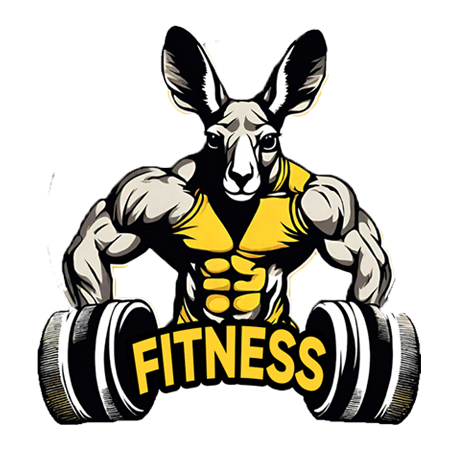
Table of Contents
ToggleIntroduction
In the realm of fitness and exercise, the concept of recovery holds a pivotal role in achieving optimal performance. Among the various approaches, “Active Recovery” emerges as a key strategy to enhance performance between workouts. This article delves into the significance of active recovery, its benefits, components, implementation into routine, and future trends.
Benefits of Active Recovery
Active recovery goes beyond mere rest days; it involves engaging in specific activities to aid the body’s recovery process actively. The benefits are multifaceted, contributing to both physical and mental well-being.
Reduced Muscle Fatigue
One of the primary advantages of active recovery is the reduction of muscle fatigue. Engaging in low-intensity exercises promotes blood flow to fatigued muscles, flushing out metabolic byproducts and easing muscle soreness. Unlike complete rest, which may lead to stiffness, active recovery keeps the body in motion without exerting excessive stress.
Faster Muscle Repair and Growth
Active recovery facilitates faster muscle repair and growth. The gentle movement enhances circulation, delivering essential nutrients and oxygen to the muscles, expediting the repair process. This can be especially beneficial for those engaged in strength training or high-intensity workouts, where muscle breakdown is a natural outcome.
Improved Joint Flexibility and Mobility
Beyond muscles, active recovery contributes to joint flexibility and mobility. Incorporating stretching exercises helps maintain and enhance the range of motion, reducing the risk of injuries associated with stiffness. Enhanced flexibility also translates to improved performance during subsequent workouts.
Components of Active Recovery
Understanding the components of active recovery is crucial for its effective implementation.
Low-Intensity Exercise
Central to recovery is engaging in low-intensity exercises. Activities such as walking, cycling, or swimming help maintain blood flow to the muscles without inducing additional stress. These exercises serve as a bridge between intense training sessions, allowing the body to recover without coming to a complete standstill.
Stretching and Flexibility Exercises

Incorporating stretching and flexibility exercises is paramount. Dynamic stretching, involving controlled movements, prepares the muscles for activity, while static stretching aids in elongating the muscles and improving overall flexibility. This combination contributes to a more supple and resilient musculoskeletal system.
Foam Rolling and Self-Myofascial Release
Active recovery embraces self-care techniques like foam rolling and self-myofascial release. Using foam rollers helps release tension in the fascia, the connective tissue surrounding muscles, promoting better circulation and reducing muscle tightness. This practice can be particularly beneficial in alleviating muscle knots and preventing the onset of overuse injuries.
Proper Hydration and Nutrition

An often underestimated component of recovery is proper hydration and nutrition. Ensuring adequate hydration supports the body’s natural detoxification processes, while a well-balanced diet provides the essential nutrients needed for recovery. Proper nutrition becomes a building block for replenishing energy stores and supporting tissue repair.
Implementing Active Recovery into Routine
The effectiveness of active recovery lies in its integration into a regular exercise routine.
Frequency and Duration
Determining the frequency and duration of recovery is a personal and dynamic process. While some individuals may benefit from daily recovery sessions, others might find success with a more moderate approach, incorporating it a few times a week. The duration of each session should be tailored to individual fitness levels and the intensity of preceding workouts.
Tailoring to Specific Workouts
Active recovery should be tailored to the specific demands of preceding workouts. For example, after a high-intensity cardio session, a low-impact activity like swimming or cycling can be more suitable. Similarly, following a strength training session, incorporating stretching and foam rolling targeted at the worked muscle groups enhances recovery.
Listening to the Body
Perhaps the most crucial aspect of recovery is listening to the body. Recognizing signs of fatigue, soreness, or decreased performance helps in adjusting the intensity and focus of recovery sessions. Pushing too hard during recovery can negate its benefits, emphasizing the importance of tuning in to one’s body cues.
Case Studies and Examples
Real-world examples and case studies illustrate the practical application and success of active recovery.
Athletes and Active Recovery Practices
Numerous elite athletes incorporate active recovery into their training regimens. For instance, marathon runners often engage in light jogging or cycling on their rest days, enhancing blood flow without taxing their bodies excessively. This consistent approach contributes to their ability to sustain high training volumes over extended periods.
Real-world Success Stories
Beyond professional athletes, everyday individuals also experience notable success with recovery. Stories abound of individuals overcoming plateaus, reducing injury occurrences, and consistently improving performance by integrating recovery into their routines. These anecdotes emphasize that recovery is not exclusive to elite athletes but can benefit anyone committed to a fitness journey.
Common Mistakes to Avoid
While active recovery is a valuable tool, certain common mistakes can hinder its effectiveness.
Overtraining even during Active Recovery
One pitfall is the tendency to overtrain even during active recovery. Individuals may feel compelled to maintain high intensity, believing that more effort equates to better results. However, recovery is about balance, and pushing too hard can lead to burnout and increased injury risk.
Neglecting Rest and Sleep

Active recovery should complement, not replace, adequate rest and sleep. Neglecting these crucial components of recovery can undermine the benefits of recovery. Sleep, in particular, is when the body undergoes significant repair and growth, making it indispensable for overall well-being and performance.
Inadequate Nutrition
Another common mistake is overlooking nutrition during recovery. Without proper fueling, the body lacks the necessary resources for optimal recovery. A well-balanced diet, rich in proteins, carbohydrates, and micronutrients, supports muscle repair and replenishes energy stores.
Future Trends in Active Recovery
As the field of fitness and wellness evolves, so too does the concept of active recovery.
Technological Innovations
Advancements in technology are shaping the future of active recovery. Wearable devices and smart fitness tools can provide real-time data on physiological markers, helping individuals tailor their recovery strategies based on personalized metrics. This data-driven approach enhances the precision and effectiveness of recovery practices.
Integration of Mind-Body Practices
The integration of mind-body practices is gaining prominence in the realm of recovery. Yoga, meditation, and mindfulness techniques contribute not only to physical recovery but also to mental well-being. Recognizing the interconnectedness of body and mind, this holistic approach addresses both the physical and psychological aspects of recovery.
Conclusion
In conclusion, the concept of active recovery stands as a cornerstone for individuals seeking to optimize their performance between workouts. Through its diverse benefits, encompassing reduced muscle fatigue, faster muscle repair and growth, and improved joint flexibility, active recovery proves to be a versatile and effective strategy. By understanding and implementing its key components, low-intensity exercise, stretching, foam rolling, and proper hydration and nutrition, individuals can elevate their overall fitness journey. The implementation of recovery into one’s routine is a dynamic and personalized process. Recognizing the frequency, duration, and tailored approach based on specific workouts is pivotal for success.
Equally important is the art of listening to one’s body, acknowledging signs of fatigue, and adjusting the intensity accordingly. The anecdotes of elite athletes and everyday success stories serve as testaments to the universal applicability of recovery, showcasing its potential to enhance performance across diverse fitness levels. However, caution must be exercised to avoid common mistakes that can compromise the effectiveness of recovery. Overtraining during recovery, neglecting sufficient rest and sleep, and overlooking proper nutrition are pitfalls to be mindful of. Striking the right balance is paramount, as recovery should be a complement to a holistic approach to well-being. Looking ahead, future trends in recovery promise exciting developments. Technological innovations, such as wearable devices and smart fitness tools, provide individuals with real-time data, enabling a more personalized and data-driven approach to recovery.
The integration of mind-body practices like yoga and meditation recognizes the interconnected nature of physical and mental well-being, paving the way for a more holistic understanding of recovery. In essence, recovery is not a one-size-fits-all solution but a dynamic and evolving strategy that adapts to individual needs and the advancements in the fitness landscape. As individuals continue to prioritize their health and well-being, recovery emerges as a powerful tool in the pursuit of sustained fitness gains and overall vitality. By embracing its principles and staying attuned to the evolving trends, individuals can unlock the full potential of recovery in enhancing their performance and well-being.
FAQs
- What is active recovery, and why is it important?
Answer: It is a way to help your body bounce back after exercise by doing light activities like walking or stretching. It’s important because it reduces muscle soreness, promotes blood flow, and speeds up the healing process.
- How often should I incorporate active recovery into my routine?
Answer: The frequency of active recovery depends on your personal preference and fitness level. Some people benefit from daily sessions, while others find success with a few times a week. Listen to your body and adjust accordingly.
- Can anyone benefit from active recovery, or is it just for athletes?
Answer: Absolutely! It is for everyone, not just athletes. It helps reduce fatigue, improves flexibility, and can be tailored to any fitness level. Everyday people can use it to enhance their well-being and fitness journey.
- Are there specific activities considered as active recovery?
Answer: Yes, activities like walking, swimming, cycling, and gentle yoga are great examples of active recovery. The key is to keep the intensity low and focus on promoting blood flow and flexibility without causing strain.
- How does active recovery differ from complete rest days?
Answer: While rest days involve taking a break from all physical activities, active recovery keeps you moving at a slower pace. Active recovery promotes healing by increasing blood circulation and preventing stiffness, unlike complete rest, which might lead to feeling stiff.
